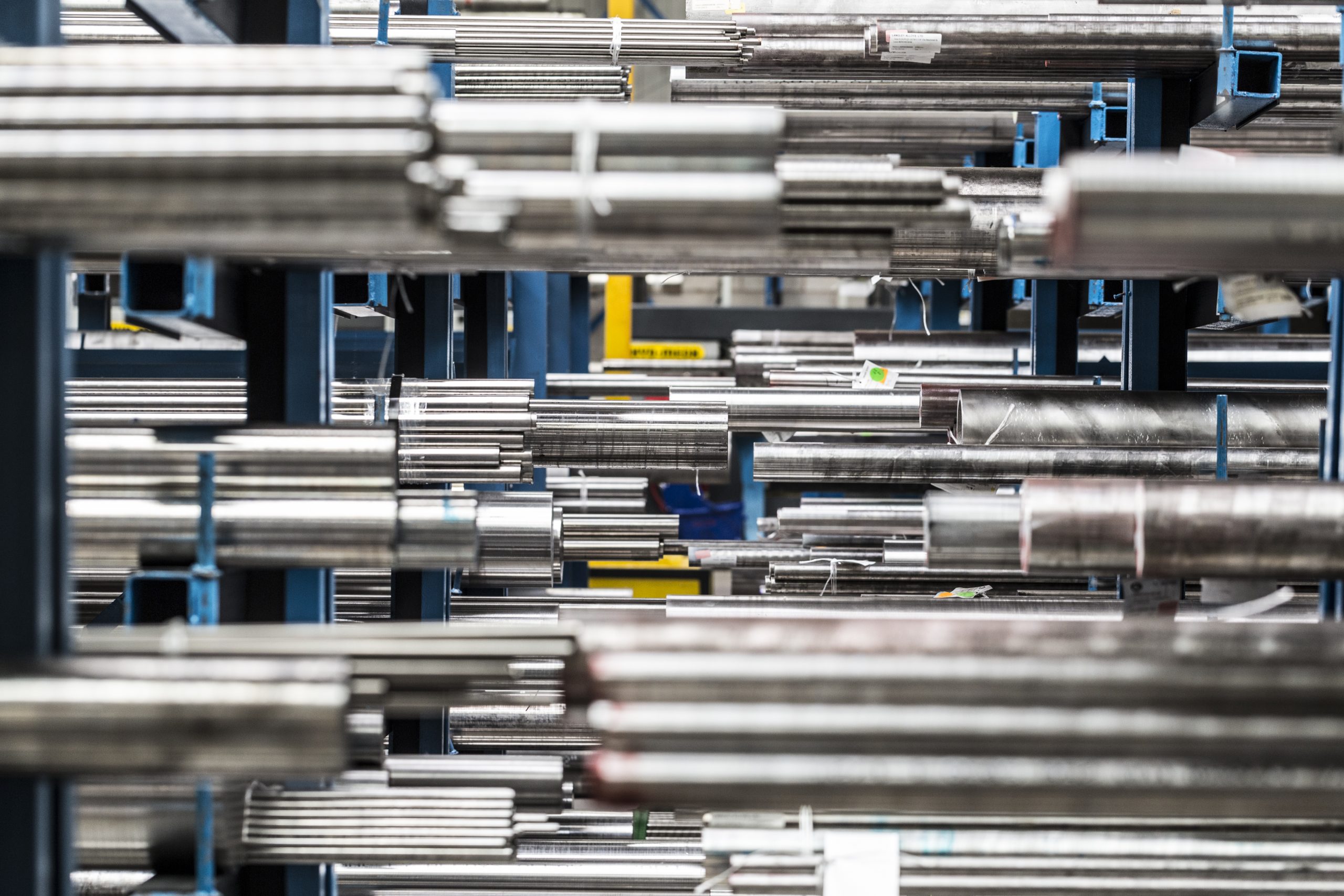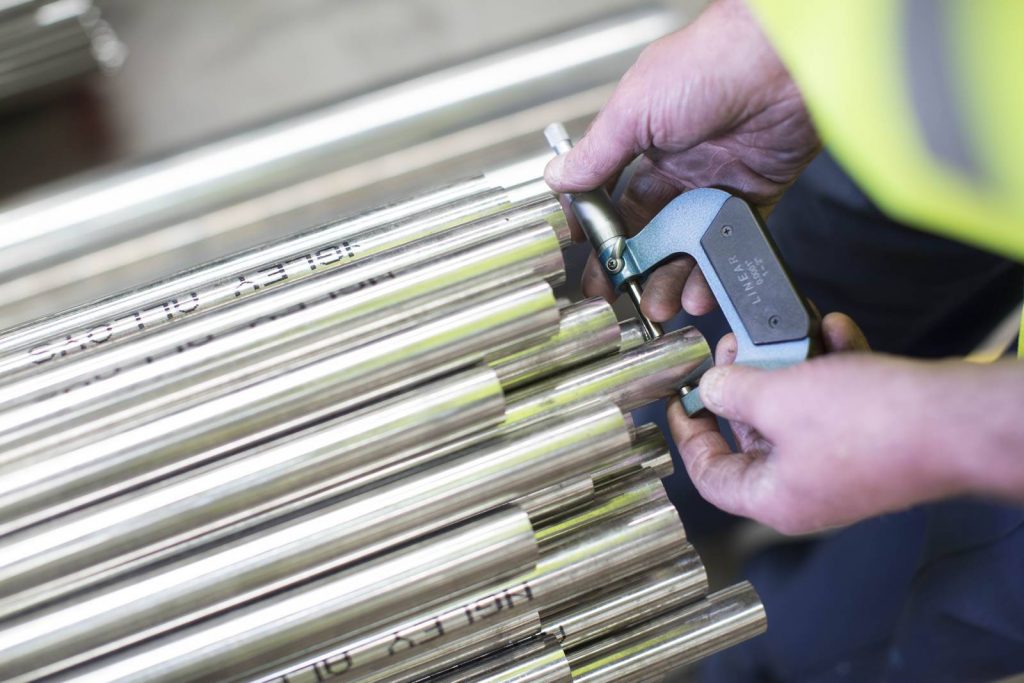
Contact us on [email protected] to request a quote

| Blogs

Summary:
There is negligible difference in the composition of Alloy K500 versus Alloy 400, therefore their corrosion resistance is comparable. However, Alloy K500 has several times greater yield and tensile strength, making it more suitable for heavily loaded applications. Langley Alloys stocks a wide range of sizes from 5/8” up to 10” diameter solid round bar.
Discussion:
Originally developed by the International Nickel Company in the early 1900’s, Monel® 400 was the first product offered in a family of subsequent developments and was based upon the ratio of nickel and copper found in naturally occurring ores from Canadian mines. As an ore is normally a very stable composition, following this approach resulted in an alloy that was equally stable, and resistant to corrosion. The Monel® trademark, now owned by Special Metal Corporation, has become synonymous with this family of alloys even though it is now more widely produced by a number of mills.
The Alloy 400 composition is almost entirely made up from nickel (>63%) and copper (28-34%), with only smaller quantities of iron, manganese and other trace elements. Nickel and copper are soluble in each other, so the microstructure consists of a single-phase. It can be strengthened by cold working, but not be heat treatment. Compared with other copper alloys, Alloy 400 has a relatively high-strength, with impact properties maintained from sub-zero up to 480degC.
As the composition is almost entirely nickel and copper, Alloy 400 is particularly resistant to seawater corrosion, as a complex but thin, adherent protective surface film forms very quickly when exposed to clean seawater. This protective film will protect the alloy in most circumstances, the only exceptions being where there is very slow flow rates that might support fouling which then allows pitting or particular contaminants that could damage this film.
As well as seawater, Alloy 400 is also resistant to corrosion in other chloride solutions, and a range of acids including sulphuric acid. It is resistant to hydrofluoric and hydrochloric acid as long as the solutions contain minimum oxygen content i.e. in reducing conditions. It is used is a wide variety of marine and chemical engineering applications that predominantly exploit its excellent corrosion resistance.
However, the strength level of Alloy 400 limits it to more structural applications. Therefore Alloy K500 was developed to overcome this limitation. It has effectively the same composition as Alloy 400, but with small additions of both aluminium and titanium (3-4% in total). The aluminium and titanium combine to form microscopic precipitates, which can be controlled through heat treatment. After forging or rolling, the round bars are subjected to an ageing heat treatment where they are held at an elevated temperature for several hours and allowed to cool slowly in air. This process ensures that as much of the aluminium and titanium is able to precipitate out of solution and form a widely-dispersed fine network. These precipitates create a significant uplift in mechanical properties – the yield strength can be up to 4x greater, and the tensile strength up to 2x greater.
The increased strength of Alloy K500 means that it can be used effectively in more challenging components, such as marine shafts, valve stems, fasteners, mixer and agitator shafts and doctor blades, drill collars and heat exchanger components.
As the composition of Alloy K500 is practically identical to that of Alloy 400, then the fundamental chemical and corrosion resistance remains unchanged. There is a view that Alloy K500 may be more susceptible to stress corrosion cracking in limited circumstances, but this is most likely attributed to being used in more highly stressed applications (because of its higher strength).
As there is no obvious downside to the specification of Alloy K500 over Alloy 400, and with the significant uplift in strength opening up a plethora of new applications, then Langley Alloys decided to concentrate its stock range around Alloy K500. We stock a wide range of sizes in solid round bar from 5/8” up to 10”, available for immediate delivery.
Additional information:
Langley Alloys history is rooted in alloy development and production. Many of our earliest inventions were based upon copper alloys, and for many years we cast our own ingots for conversion into Alloy K500. As such, this alloy has been part of our product offering for a great many years, allowing us to build up a comprehensive stock range and product knowledge by working with end-users.
Alloy 400: BS 3076 NA13, Werkstoff No. 2.4360, ASTM A164, UNS N04400, N04405, QQ – N – 281, Monel® 400
Alloy K500: UNS N05500, Werkstoff No. 2.4375, ASTM B865, AMS 4676, Monel® K500
Monel® is a trademark of Special Metals Corporation.
Worldwide Delivery Available
We can offer air, sea and road freight shipping options, with choice of packaging, to deliver to customers globally.
Inventory Management
Let us manage your total material requirements with call-off and consignment arrangements.
Up to 40 sizes per alloy available
More sizes equal less machining and a more cost-effective supply chain.